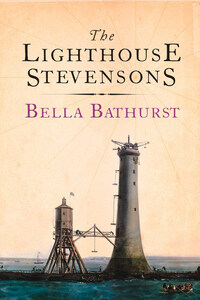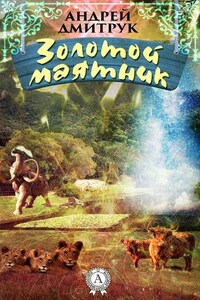Cover
Title Page
Introduction
Chapter One - Framebuilding
Chapter Two - You Say You Want a Revolution
Chapter Three - Feral Cycling and the Serious Men
Chapter Four - The Great Wheel
Chapter Five - Watercycling to France
Chapter Six - The Worst Journey in the World
Photographic Insert
Chapter Seven - The Silent Black Line
Chapter Eight - The Burning Man
Chapter Nine - Bad Teeth No Bar
Chapter Ten - Axles of Evil
Chapter Eleven - Knobbled
Conclusion - Love and Souplesse
Glossary
List of Illustrations
Bibliography
Acknowledgements
About the Author
Praise
Also by Bella Bathurst
Copyright
About the Publisher
Introduction
‘The gross and net result of it is that people who spent most of their natural lives riding iron bicycles over the rocky roadsteads of this parish get their personalities mixed up with the personalities of their bicycle as a result of the interchanging of the atoms of each of them … you would be surprised at the number of people in these parts who nearly are half people and half bicycles.’
FLANN O’BRIEN,
THE THIRD POLICEMAN
A bicycle undoubtedly has its downsides. It won’t shelter you from the elements, or protect you from the fury of your fellow traveller. It lacks the romance of a sailboat or the simplicity of your own two feet. It will not give you the same sensation that sitting in £180,000-worth of over-charged horsepower does. It is miserable in the wet. No other form of transport ever takes it seriously. It is sliced up by cabs and menaced by buses. It is loathed by motorists and loved by the sort of politicians who would never dream of actually using it. It can’t transport you from one end of the world to the other in time for Christmas. It doesn’t have a particularly distinguished industrial history. It gets stolen, on average, every minute and a half. It delivers you at the end of your journey covered in a light film of sweat and toxic diesel particulates. It requires a lot of silly clothing. And, of course, it is occasionally fatal.
And yet cycling obsesses people. They take it up for practical reasons – health, economy, twelve points on their driving licence – and before they know it they’re gleaming with zeal and talking slightly too fast about fixies and resting BPMs. Things that they hadn’t thought about since they were children start to preoccupy them – the stuff of bikes, the speed of them, their grace or style or character. It doesn’t take long before the daily commute to work becomes a journey to be looked forward to, an adventure instead of an ordeal. There are conversations with colleagues about bikes and the experience of cycling; new connections are made. On the road, they start silently checking out fellow converts. Looking for short cuts and alternative routes, they ride past bits of the city – intriguing, come-hither bits – they never knew existed. In their houses, items of bike kit start to multiply. Tyres and lights now take up as much space as hats and coats. They persuade themselves that lugging a muddy vintage steel-framed roadster up three flights of stairs at night is a reasonable way to get fit. Cycling starts to become as much a way of life and a philosophy as it does a form of transport. It spreads from work to weekends to holidays. They nominate themselves for sponsored rides and charity marathons. They stop thinking in miles and start thinking in kilometres. Almost by mistake, they find themselves in possession of a whole fleet of bikes: one for work, one for speed, one for the wet, one for annoying other people who know about bikes. They realise that one of the major advantages to cycling is the ability – more than that, the need – to consume their own bodyweight in spag bol and chocolate cake every day. Instead of road-tripping it round America as in the old days, family holidays are now spent hurtling through the Austrian Tyrol like two-wheeled von Trapps. They arrive at work early every day now, radiant with sweat and self-satisfaction. At home, they talk about getting rid of the car. In the evenings, they admire their newly altered profile in the mirror; the helmet hair, the buns of steel, the bloody knees. After a while they find themselves making unexpected judgement calls – can one cycle elegantly in a pencil skirt, what is the optimum number of children per bicycle, how wet is too wet, is Kent too far, perhaps an Étape might be nice. They discover that the thing about cycling isn’t that it’s healthy, or environmentally friendly, or fast, or convenient, or politically correct. The thing about it is that it’s fun.
Part of that is the straightforward childlike joy in riding a bike, the urge to yell, ‘Whheeee!’ on the way downhill. There’s a huge pleasure in going places cars can’t go, in dodging and weaving, in a bike’s simple agility. It makes previously unknown districts more accessible and familiar ones more difficult. It reinvents familiar geography, opens up towpaths or riverbanks or favoured rat runs across town. It offers the little tremor of happiness from bending urban by-laws back to suit the individual, and the constant delight in going straight to the front of the queue. It allows one to feel smooth and charged and graceful in a world full of blocks and obstructions. It has the peculiar attraction of being healthy, dirty and risky all at once. It offers the interesting discovery that getting to and from work need not necessarily mean the abandonment of sanity. It can be companionable or solitary, competitive or amicable. And, like the horse or the sailboat, it feels somehow as if it’s exactly the right pace for a human to travel.









